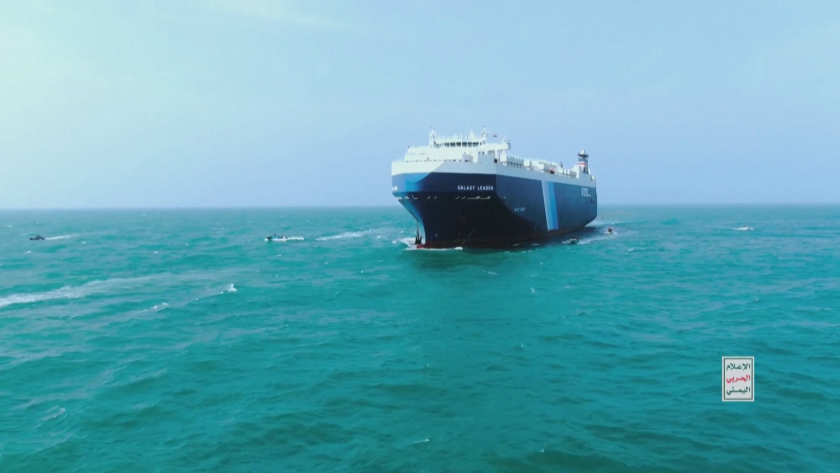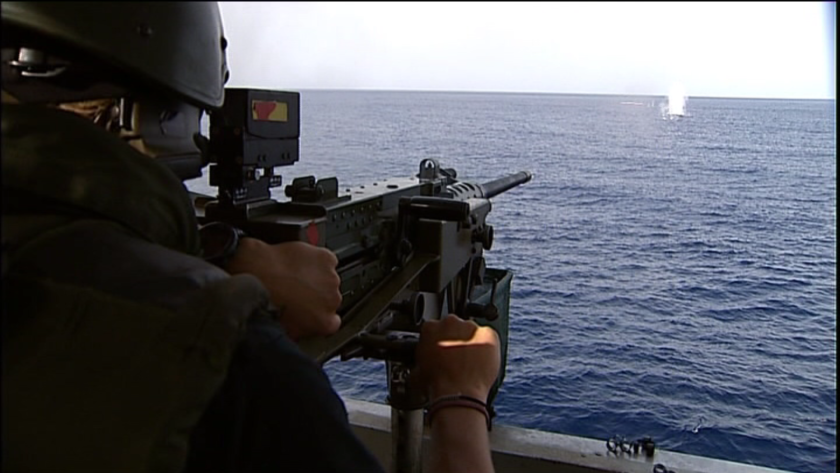Use of helicopter to hijack the ship with the two Bulgarians on board is unprecedented, experts say

The use of helicopter to hijack the ship with two Bulgarians on board in the Red Sea is unprecedented in history, say experts in the field of shipping and security.
It is possible that the company was the target of espionage and that the terrorists had information about the ship's course and its security plan. What were the crew's response options and what were the weaknesses the hijackers exploited?
Two Bulgarians on the hijacked cargo ship in the Red Sea, one of them is the captain

A helicopter made a risky maneuver and managed to land on the deck of the ship on the first try. Armed men with assault rifles and masks on their faces, looking more like commandos than pirates, descended from it. The hijackers attacked from the stern. The reason - that's where the radar dead zone is.
At least seven armed men immediately headed for the captain's bridge. The crew was forced to lie on the ground. In the meantime, the cargo holds have also been taken over. It was done in a matter of minutes. The crew was left without time to react.
"This is an escalation to a higher level. These are not pirates. These are well-trained professionals. There has never been a case like this before," said Captain Rumen Rusev.
In 2016, Captain Ivan Stanoikov's ship was attacked on the water by a similar paramilitary structure. His crew then managed to hide in the ship's citadel, or so-called panic room. The captain remained on board with the mate and signalled for help. Helicopters from Oman arrive on the scene and fire shells into the bridge, freeing the ship. According to the Bulgarian captain, such hijacking of a ship by air has never been done before. The element of surprise gave no opportunity for reaction. The radar systems could detect an object at about 50 meters altitude, but no one would have guessed that it could be a helicopter and in an area that was not risky.
Houthis set conditions for release of hijacked ship with Bulgarians on board

"It was relatively close to Saudi Arabia. A country that is perfectly organised in terms of security codes. For me, the first question that arises is how come a helicopter that is not marked suddenly appears," said Capt. Ivan Stanoykov.
According to Captain Stanoykov, the footage shows that the attackers have the knowledge, capacity and resources. The location was not chosen at random as the ship's manoeuvring options are limited in this area. The version of espionage should not be ruled out. It is highly probable that the attackers had prior information about the course.
"They have an idea of the ship's security plan, where to go, how to move out, what they are doing. There are no random things from these people," said Captain Ivan Stanoykov.
In such a situation, the captain cannot show initiative. He has to follow the company's written procedures. The crew is not allowed to have weapons.
"The bridge should have been better secured. There is a foil that doesn't let bullets through and they can't go through the glass. It's not up to the captain. It's company policy. It's written procedures," Capt. Ivan Stanoykov said.

One of the practices to protect ships is to hire former seals or military. They are most often used on voyages between Sri Lanka and the Suez Canal. The training of the crews is mainly related to the previously known attacks by Somali pirates, who use fast fishing boats, assault rifles and ropes.
"The ship itself is prepared with barbed wire. Water is released. It is monitored. Many measures are being taken which are highly effective. Where procedures are not followed it often happens that the ship is hijacked. For ransom," said Captain Rumen Rusev.
However, according to experts, plans for action in a situation where the attack is by air have yet to be worked out. The hijacking is likely to have consequences in several aspects.
"Very soon there will be an announcement of international organizations that define the risk and this area will be defined as high-risk, and now for the specific measures is a matter of very deep analysis, which will be carried out by specialists who are not only maritime, but also security specialists who work together in such cases," said Dimitri Dimitrov, President of the European Confederation of Sea Captains' Associations.
"Now that they have raised the risk level, the insurance for the risk of hijacking will now have a much higher cost, i.e. much more has to be paid by the cargo ships that pass through this area," commented Middle East Expert, Prof. Vladimir Chukov.

Each vessel has plans that describe how to react in different situations and each of the sailors is trained. The hijacking of the Galaxy Leader, however, has no parallel.
"Especially for an attack by air, I personally have not seen plans that include actions in such a situation, as I have no recollection of there ever being such a case when pirates and hijackers attack a ship by air. The basic principle is non-violence," said Dimitar Dimitrov.
If the ships have to bypass the danger zone it will prolong their journey by 16 days, which will also lead to additional costs.
Get the latest news wherever you are!
Follow us on
Facebook
and
Instagram
Follow BNT’s YouTube channel
You can now also watch us on
TikTok
Find us on
Google News























